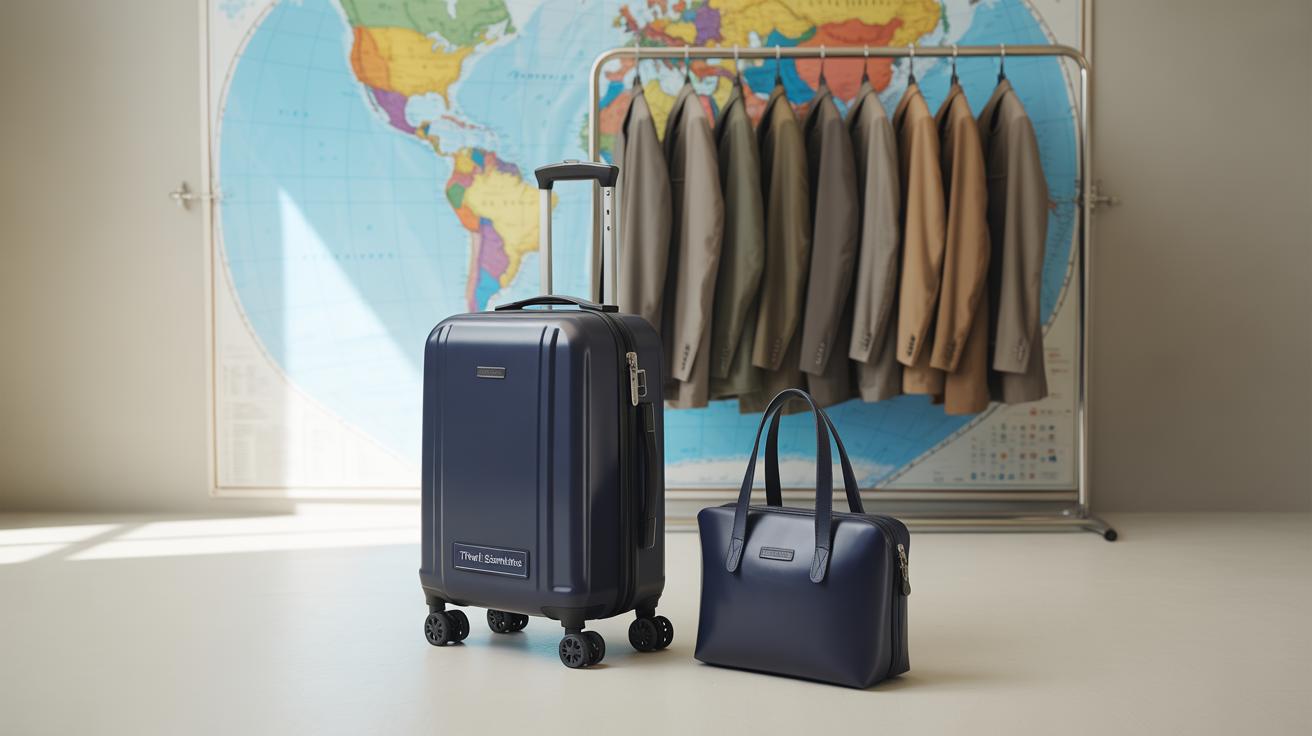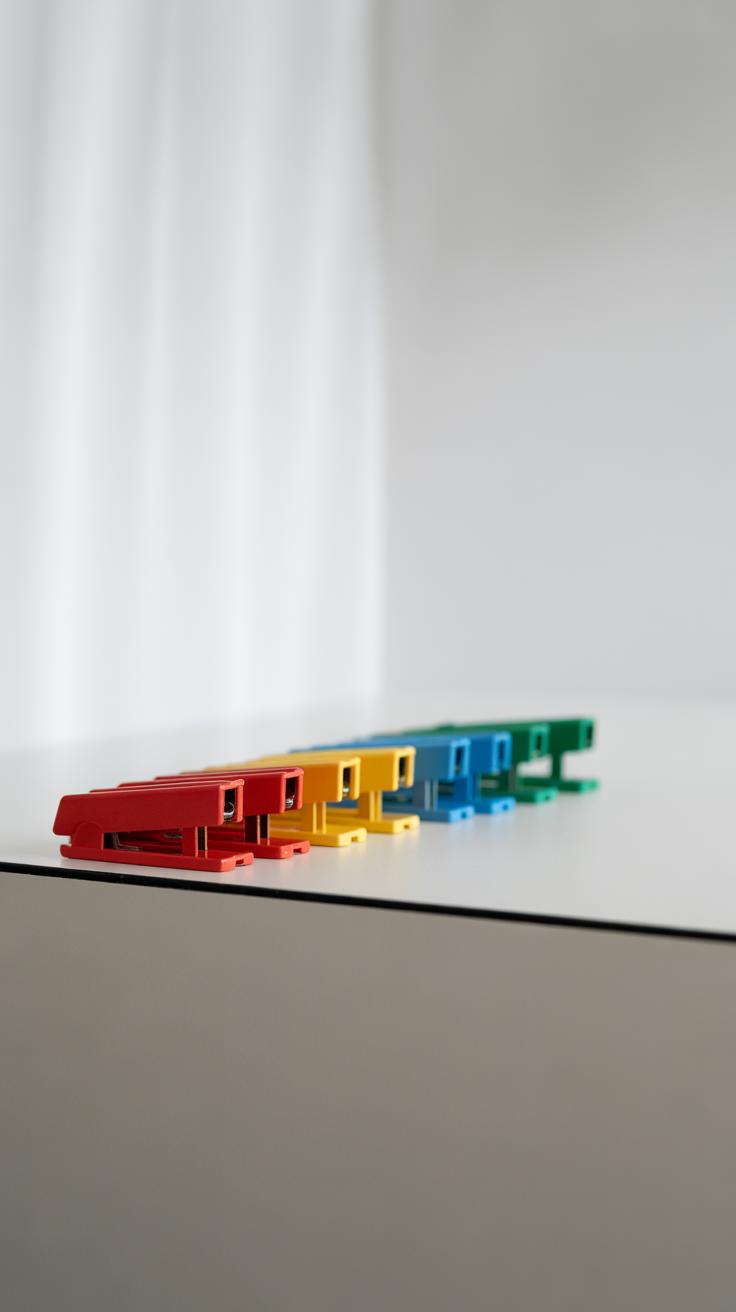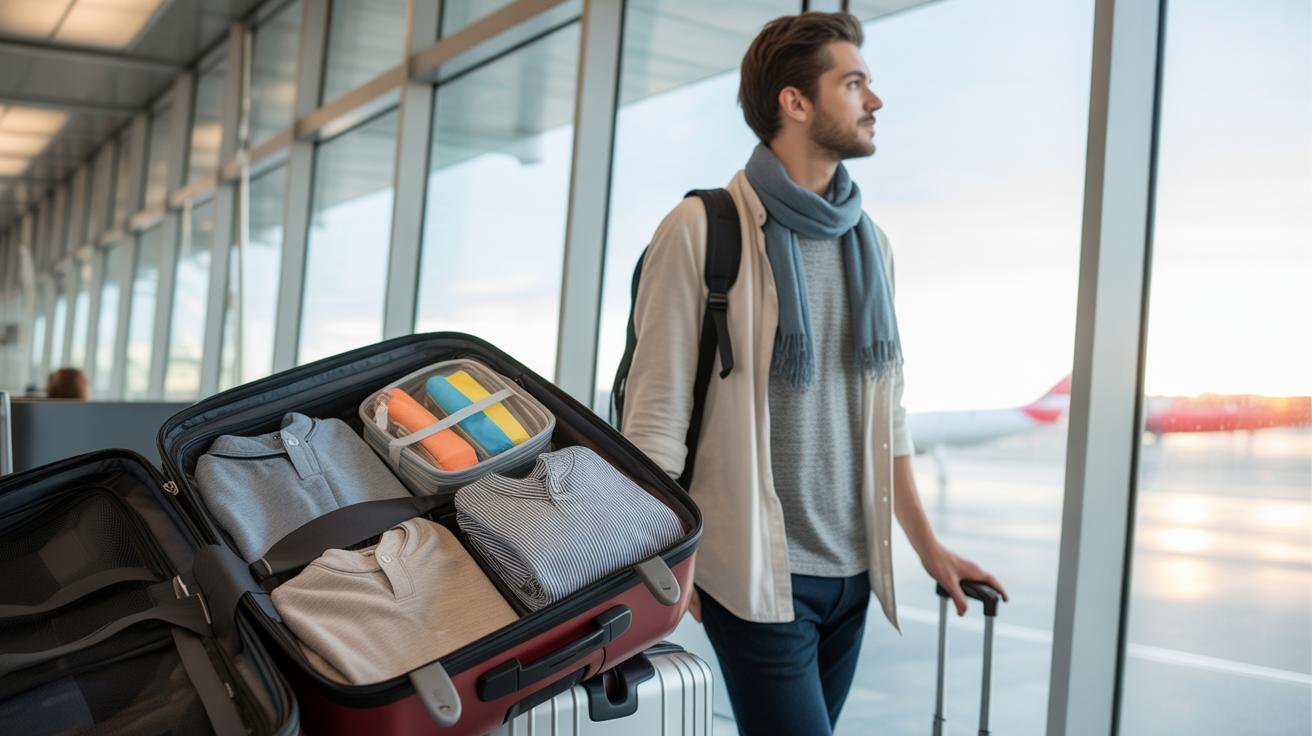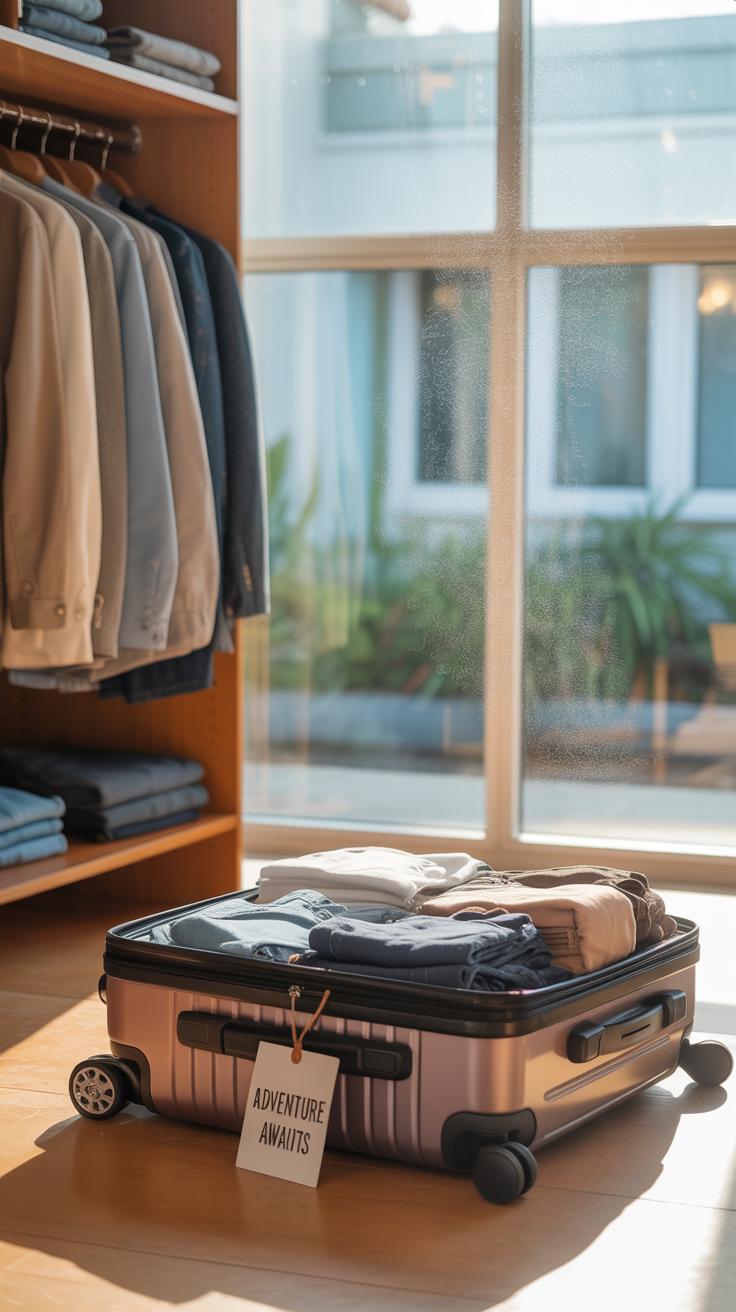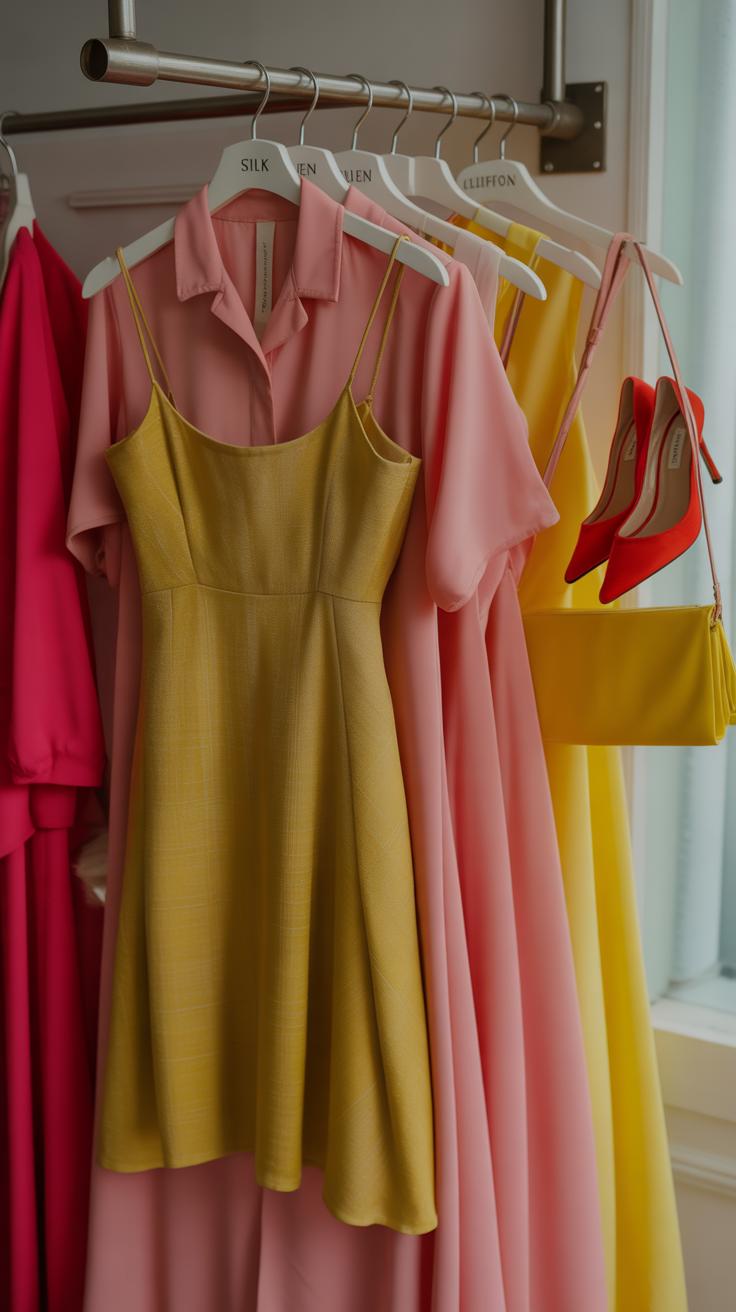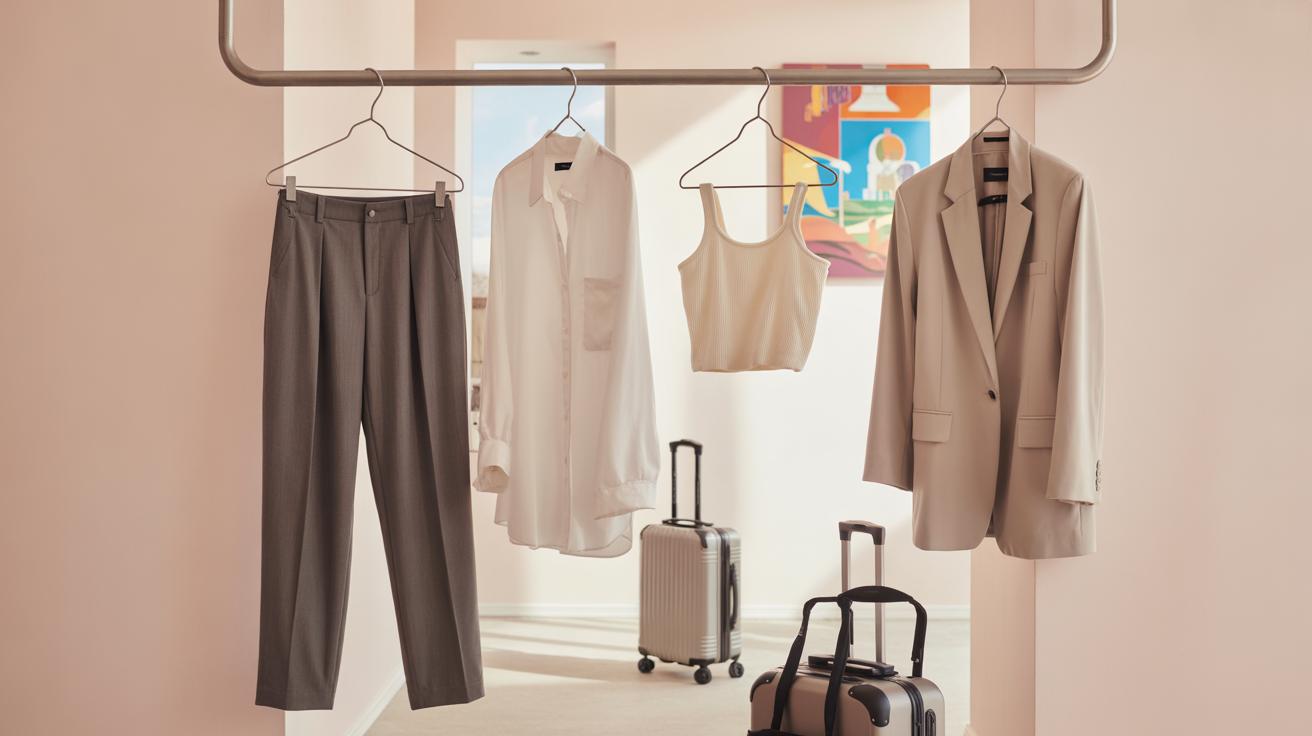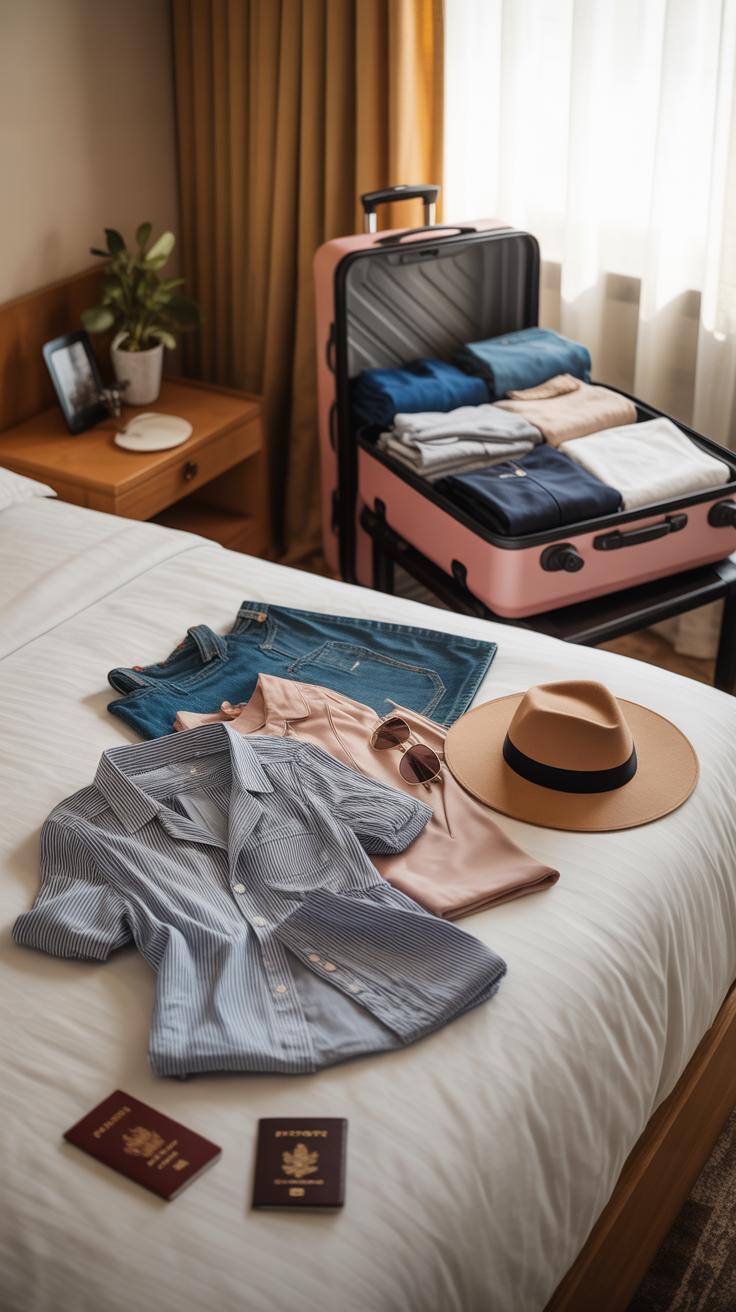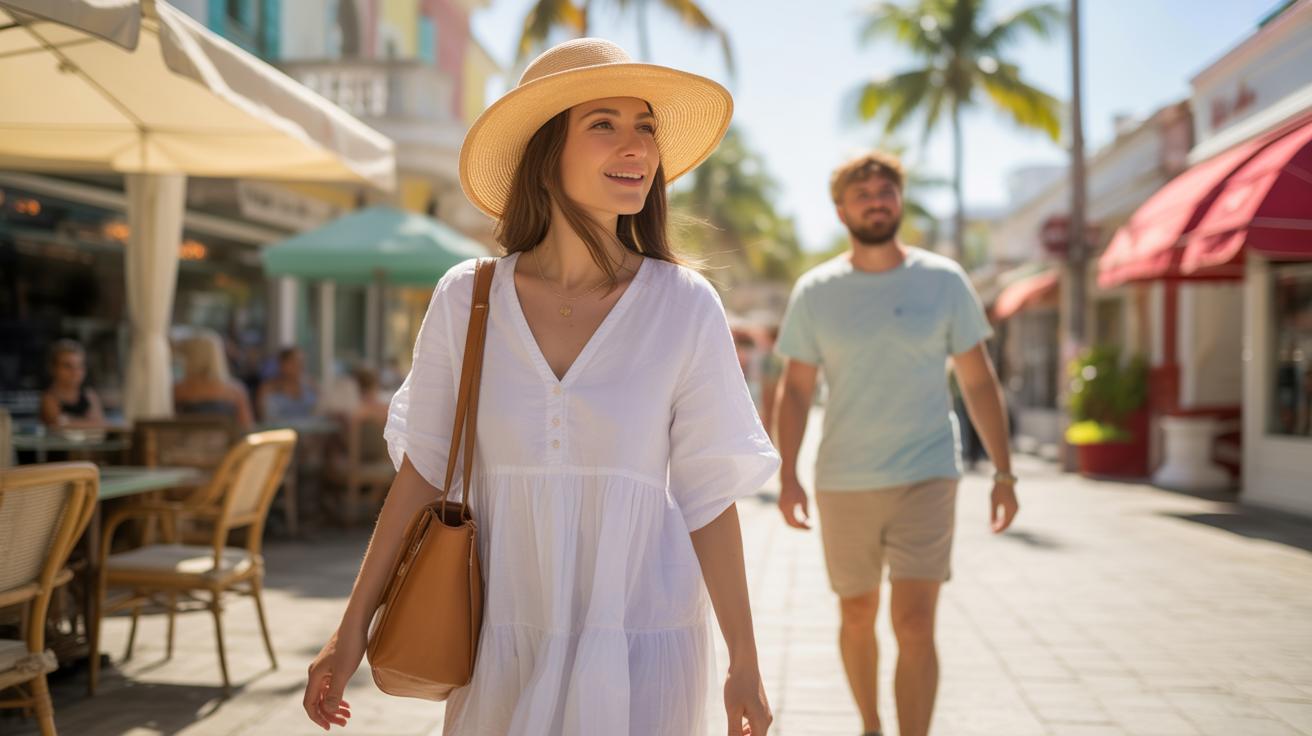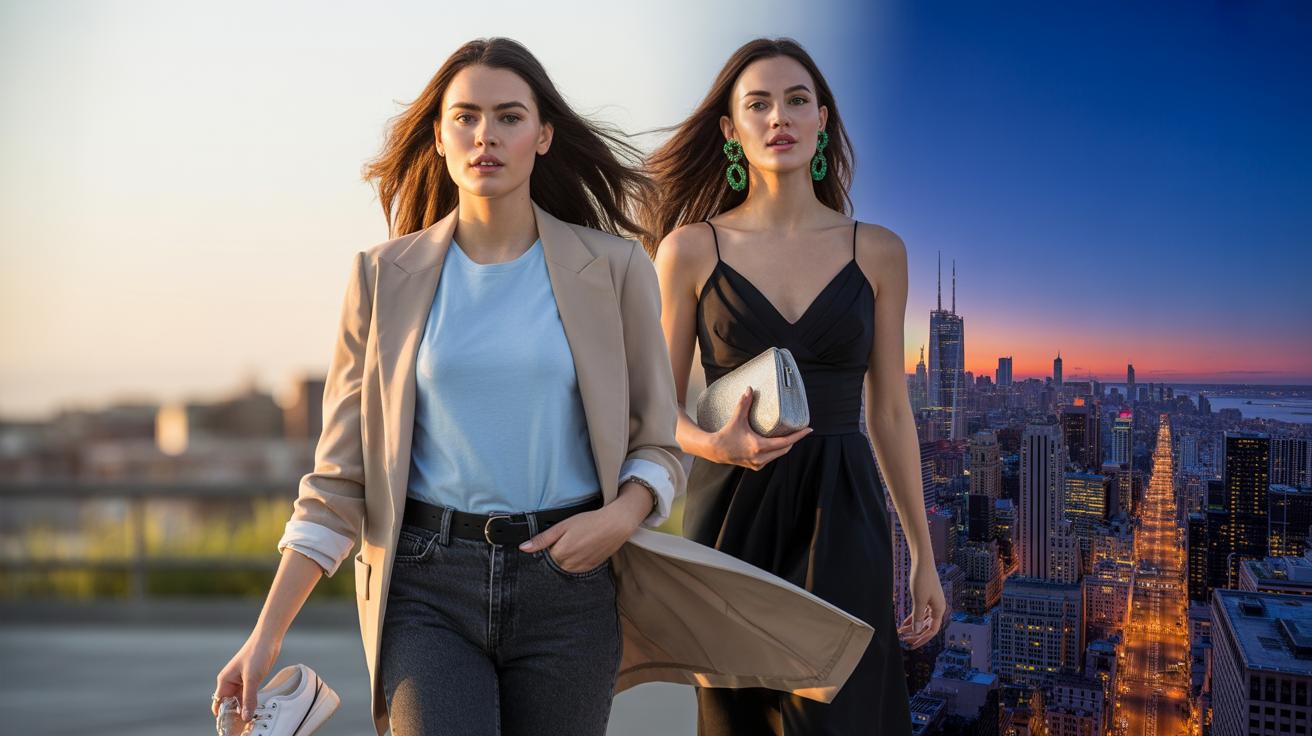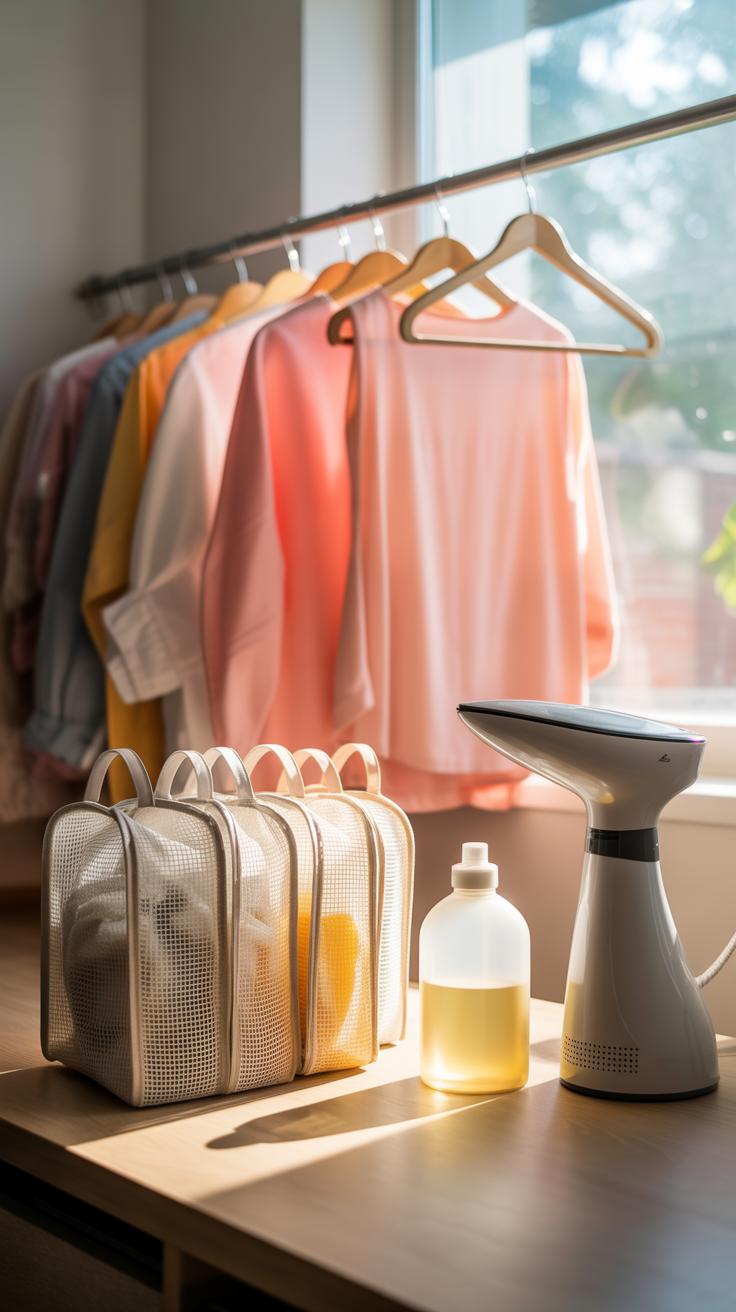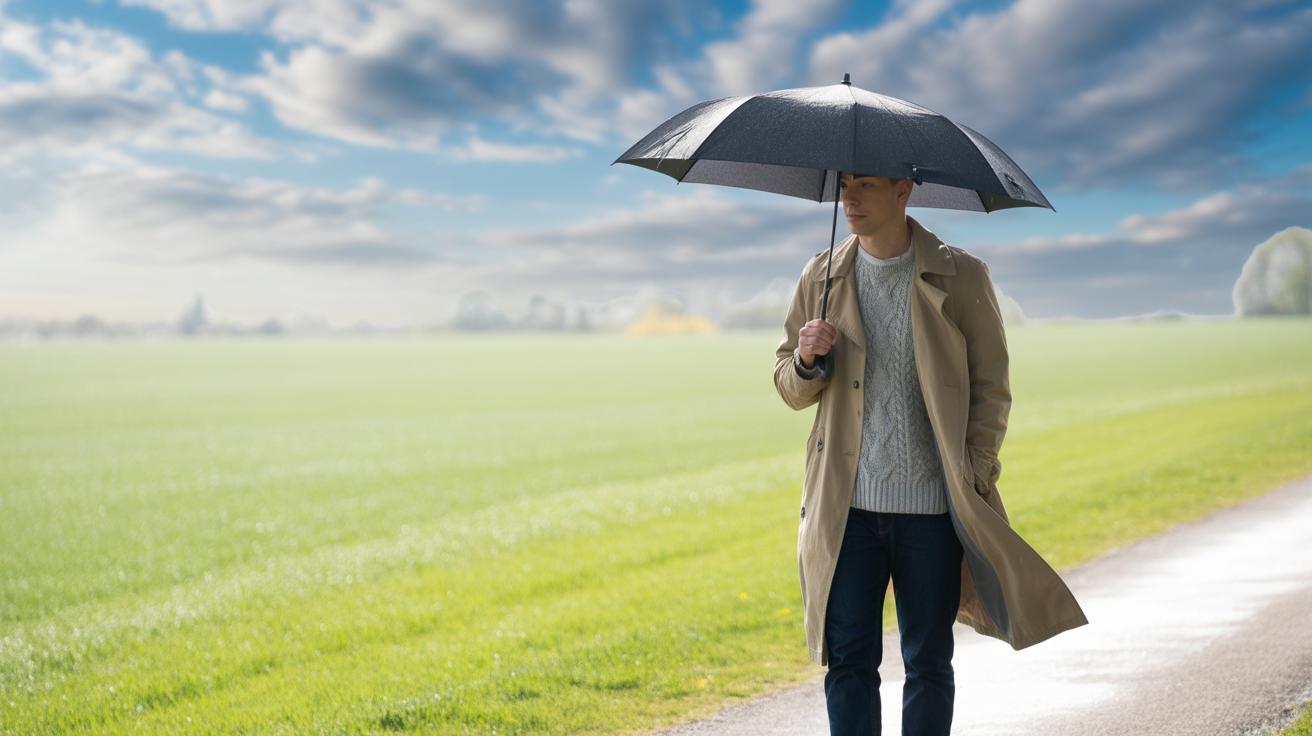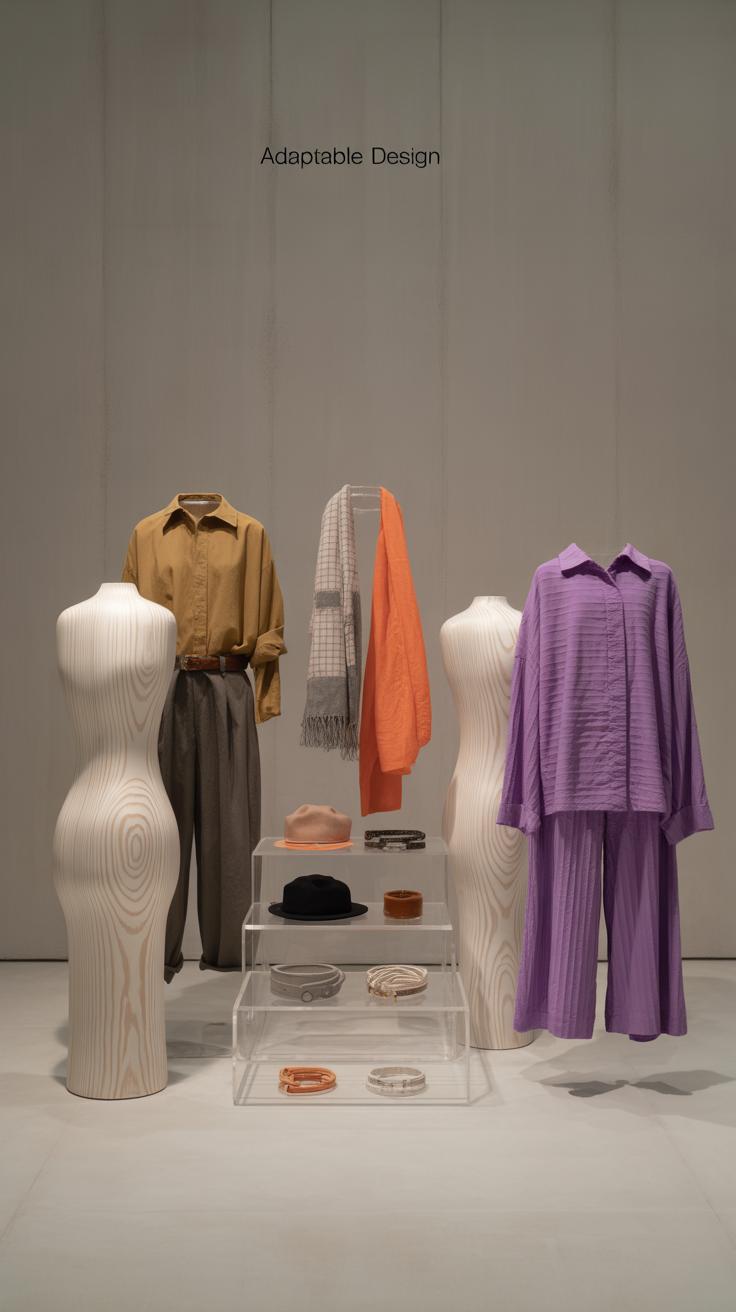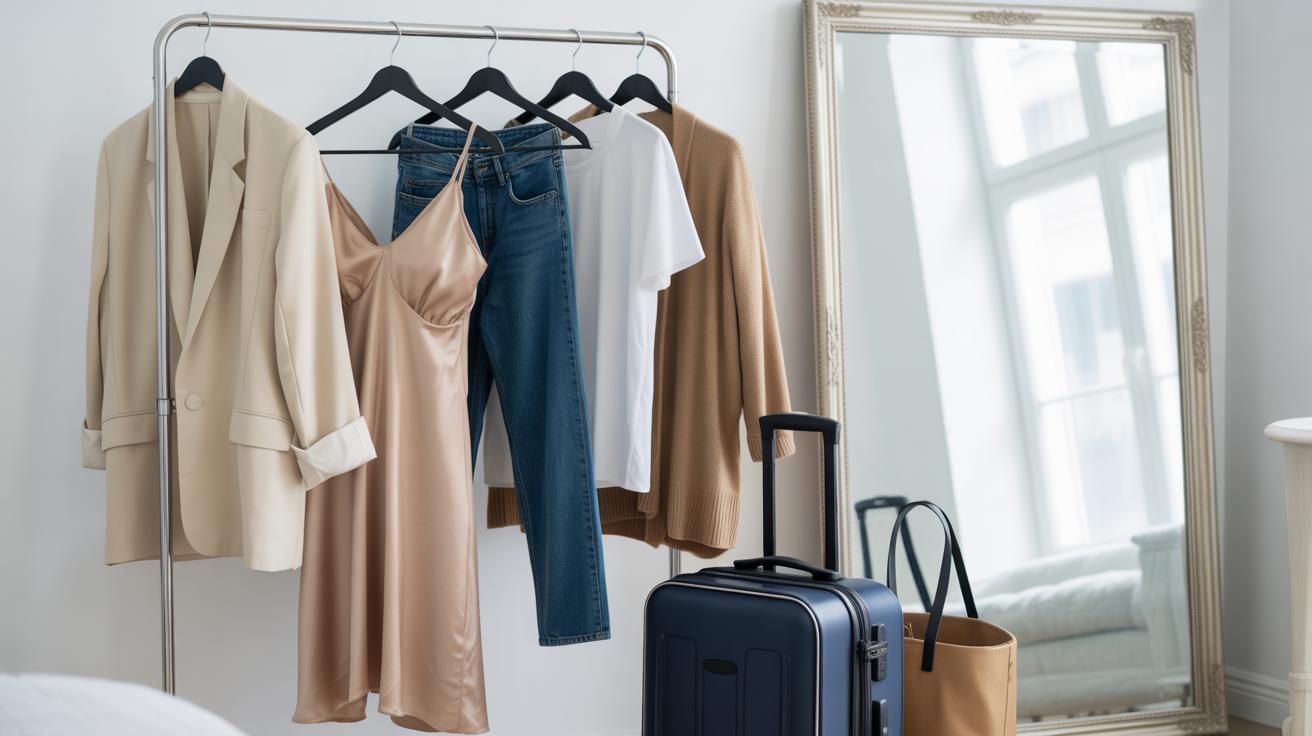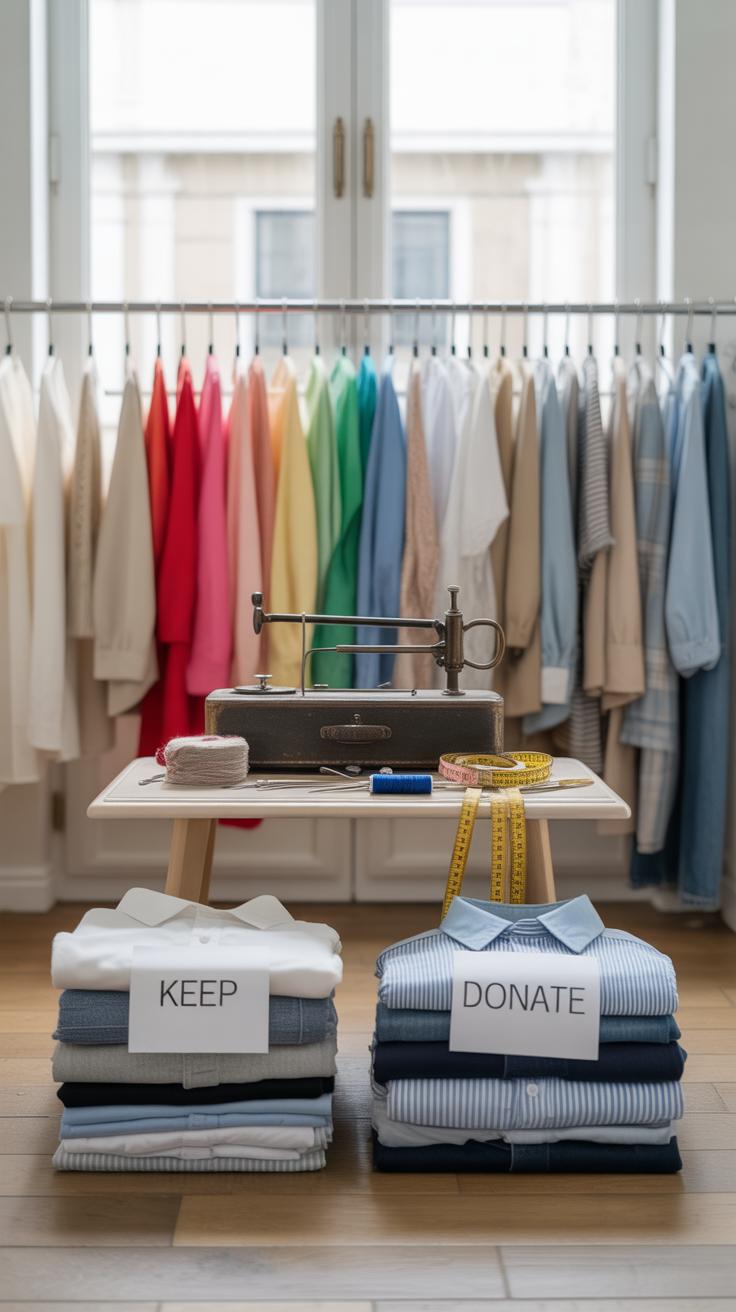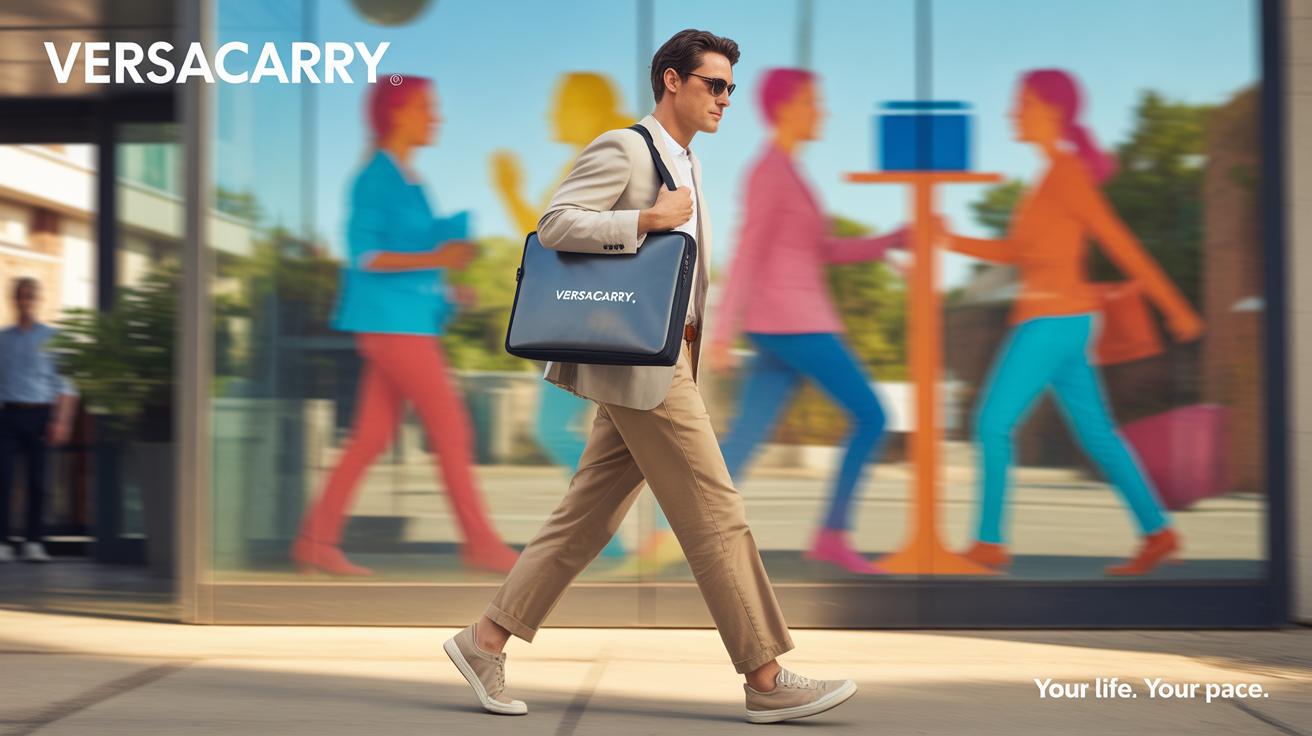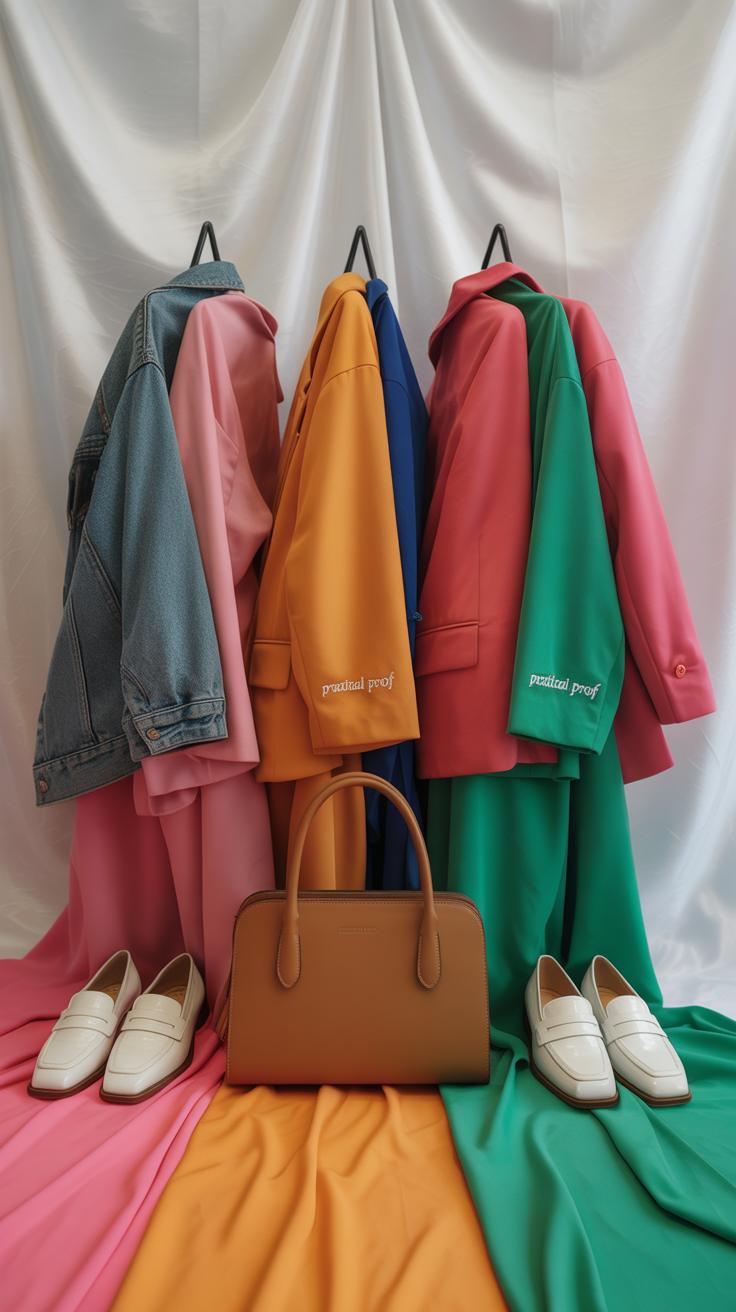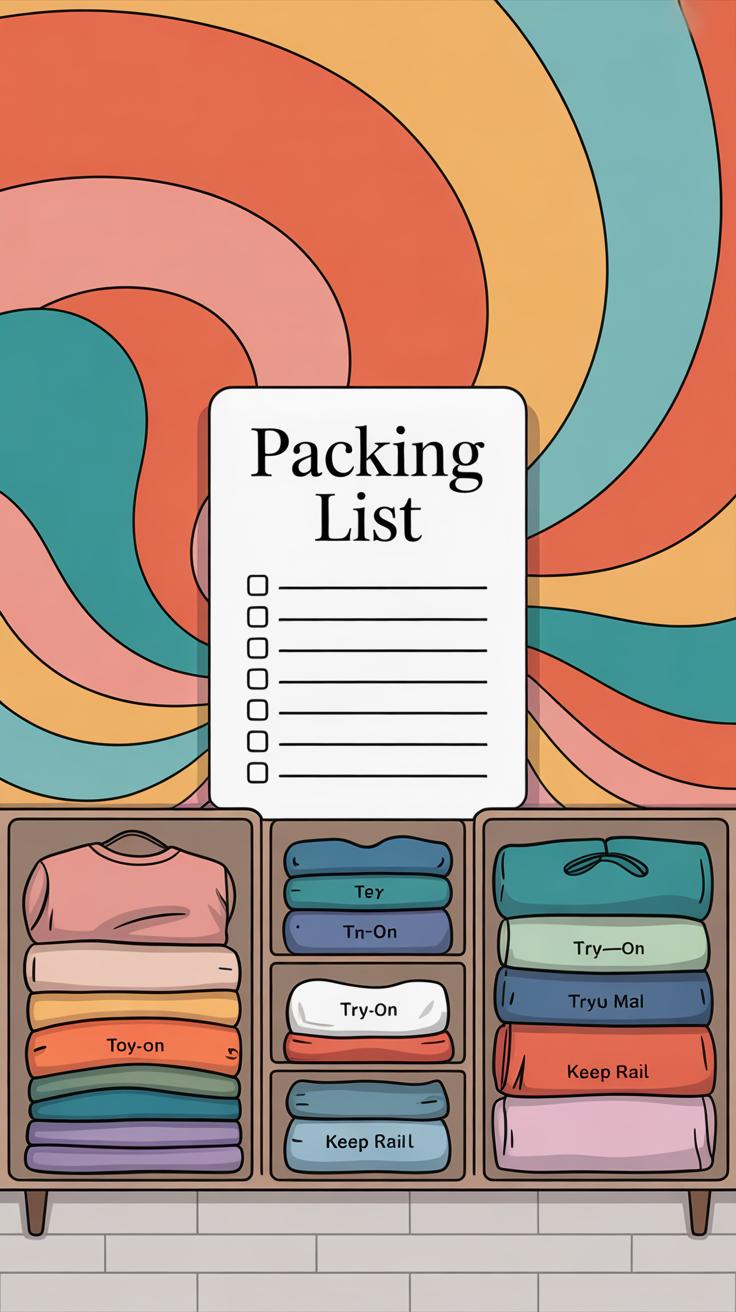Introduction
A capsule wardrobe is a small collection of essential clothing items that mix and match to create many outfits. It helps you pack less while still having stylish options. This idea saves space and reduces stress when packing for trips or organizing your daily clothes. You choose key pieces in coordinating colors that work for different occasions and weather.
In this article, you will explore practical ways to create your own capsule wardrobe. We explain the basics, give tips on choosing the right items, and show how this approach makes packing easier. Whether for travel or everyday life, a capsule wardrobe helps you look good with less effort and fewer clothes.
What is a Capsule Wardrobe
A capsule wardrobe is basically a small set of essential clothing pieces that can be mixed and matched to create lots of different outfits. Think of it as a carefully chosen collection where every item works with the others. You don’t have a closet overflowing with clothes you rarely wear. Instead, you have versatile, coordinated pieces, and that’s kind of the whole point. It’s about keeping things simple—but not boring.
The idea focuses on minimalism, but it’s not about having as few clothes as possible, more about having the right clothes. Historically, people have leaned toward this concept when wardrobes needed to be practical and easy to manage. For example, during the 1940s, people wore fewer pieces but mixed them creatively. Today’s capsule wardrobes borrow from both that practicality and modern aesthetics of coordination and style. It might feel a bit limiting at first, but it often ends up feeling freeing.
History and Idea Behind Capsule Wardrobes
The concept started in the 1940s, during a time when clothes were often rationed or dresses were simple by necessity. The idea was to own a few timeless pieces that could be worn repeatedly without much fuss. Then, in the 1970s, Susie Faux, a London boutique owner, brought the idea back, encouraging women to buy fewer but better clothes, focusing on quality over quantity.
Donna Karan made the idea more mainstream in 1985 with her “7 Easy Pieces” collection—seven items that could be mixed to cover all occasions. She wanted women to simplify dressing without sacrificing style. The underlying aim was to cut through the chaos of fashion trends and have a functional, stylish base that fits your life. So, the capsule wardrobe was born out of practicality, style, and a bit of rebellion against fashion excess.
How Capsule Wardrobes Work
On a daily level, a capsule wardrobe is surprisingly straightforward. You pick staple items—tops, bottoms, outerwear—that usually share a similar color palette or style vibe. That way, you can easily mix and match pieces. For instance, a neutral blazer goes with multiple pairs of pants or skirts, and a couple of classic shirts can be dressed up or down.
Think about coordinating colors across your clothes, maybe sticking to a few shades rather than a rainbow to keep things flexible. This means grabbing a jacket, mixing it with a pair of pants, and swapping out tops can feel quite fresh without the need to constantly buy new pieces. Your wardrobe transforms into a tool that adapts to work, weekend, or even special events with very little effort. It’s about reducing the “What do I wear?” moments while still feeling put-together.
Benefits of a Capsule Wardrobe
Saving Time and Stress
You might not have realized just how much time you spend deciding what to wear until you simplify your wardrobe. When your closet holds fewer options, the whole process can become surprisingly quicker. Instead of staring blankly at dozens of pieces, you focus on a handful of items you actually like and feel good in. That convenience is not just about mornings; packing for trips gets easier too. With a capsule wardrobe, you’re not overloaded with choices or uncertain whether you have the right outfit. Fewer options can actually feel calming, not limiting. Maybe it sounds strange, but sometimes having less makes decision-making less stressful, and that’s a really underrated benefit.
Reducing Clutter and Saving Space
When you own fewer clothes, it naturally means less clutter takes over your room or closet. It’s not just about neatness, but about mentally feeling more organized—something you might not expect at first. Imagine opening your drawer and quickly spotting what you need, rather than digging through piles. Plus, when you travel, packing light becomes more doable. No more suitcase stuffed to the brim with “just in case” items. You end up with a smaller, manageable selection of versatile clothes that fit together well. The space you save, both at home and on the go, can make a difference you didn’t know you needed.
Choosing Your Capsule Wardrobe Pieces
Selecting Staples for Style and Comfort
Picking the right pieces means focusing on items you actually enjoy wearing—and that fit well. You might have a pair of trousers that feel just right, neither too tight nor too loose. Those are the ones to keep. Same goes for skirts and shirts. Comfort shouldn’t be sacrificed for style, not if you want to wear these pieces repeatedly.
Look for fabrics that breathe, stretch a little, or move easily with you. Cotton blends, linen, or soft knits often work better than stiff synthetics. Quality plays a part too—a well-made coat can outlast several cheaper ones. That said, sometimes you’ll find a bargain that feels surprisingly good, so don’t rule anything out just because it’s not pricey. Fit is a bit trickier; things like adjustable waistbands or slightly stretchy fabrics make daily wear easier.
Choosing Coordinating Colors
When you pick your wardrobe’s colors, think about how they play together. Neutral tones make mixing and matching less stressful. Shades like black, navy, beige, white, or soft grey tend to combine well. For example, a navy coat paired with grey trousers and a white shirt can work across seasons and occasions. But you don’t need everything to be neutral; adding one or two muted colors like olive, dusty pink, or burgundy can add personality without complicating things.
Ask yourself: How many colors do I want to juggle? The simpler your palette, the easier it gets. Yet, sometimes a pop of color feels necessary, so it’s okay to include one or two bolder pieces as accents. Just keep them limited. This approach saves time when putting outfits together but still lets your style show. What colors make you feel confident and comfortable? That question might guide you more than any trend does.
Building a Capsule Wardrobe for Travel
Creating a capsule wardrobe for travel means picking clothes that pack small, wear well, and flex easily with your itinerary. Think about fabrics first—those that don’t wrinkle much, dry quickly, and feel comfortable in various climates. Materials like merino wool, lightweight cotton blends, and synthetic fabrics designed for travel can be absolute lifesavers. They hold up better against packing chaos and often resist odors, which is handy when laundry isn’t an option.
When selecting pieces, I try to imagine at least three different situations per item. A single blouse might feel right for sightseeing, dinners, or even a casual meeting—depending on how you accessorize it. Layering makes a huge difference too. Instead of bulky jackets, thin cardigans or versatile scarves add warmth without adding bulk.
Keep versatility front and center. For instance, a pair of neutral-colored trousers can work just as well with a tee for the daytime as with a blouse for a night out. And don’t overlook multifunctional items like dresses that can be worn solo or layered with leggings and jackets. While building your suitcase, ask yourself: can this item play more than one role? If not, maybe it’s better left out.
Packing Light and Smart for Any Trip
Packing for varied weather and activities feels tricky, but it can be simplified by focusing on a few core pieces that adapt well. For unpredictable climates, bring layers instead of a heavy coat. Items like a breathable jacket, versatile scarf, and quick-dry undershirts help you adjust without overpacking. Choosing shoes can be tough—try to bring one pair that’s walkable yet polished enough if your plans change.
Also, think about your activities. If you know you’ll be mostly walking but also attending a dinner, a neat sneaker and a pair of slip-on flats might cover both. And if rain is likely, a packable rain jacket really saves space compared to a bulky umbrella or heavy waterproof coat.
Planning outfits ahead lets you spot gaps and avoid duplicates. It’s more efficient to carry five well-chosen items than ten random ones you barely wear. Sometimes I bring a simple dress or pants in darker shades—it’s less likely to show wear, and you can freshen it up with accessories.
Mixing and Matching to Stretch Outfits
One of the best parts of a travel capsule wardrobe is how mixing and matching stretches your options far beyond the number of pieces you packed. When I’m on the road, I often combine the same shirt with different bottoms or layer tank tops under or over shirts to create new looks. Changing shoes or adding a belt or scarf can alter an outfit’s vibe more than you’d expect.
Try thinking in terms of separates instead of whole outfits. A skirt, for example, can be casual with a tee and sandals or sharper with a blouse and loafers. You can even repurpose tops as lightweight outer layers on cooler days.
Flip through your mental wardrobe every day. Which pieces could you swap in or out? Maybe that jacket you thought was just “okay” actually ties your outfits together. The real trick, I guess, is forgetting you have to pack like a fashion stylist and instead aiming for practical variety that suits your plans—and your mood.
Maintaining Your Capsule Wardrobe
Seasonal Updates and Replacements
Your capsule wardrobe isn’t a one-time setup; it needs gentle nudges and tweaks over time. As seasons change, so do your needs. The key is knowing when to add or swap pieces without letting the wardrobe bloat. Usually, refreshing at the start of each season works well—like adding a cozy sweater for fall or a light jacket for spring.
When you bring in new items, think about versatility first. Can that cardigan pair with most of your existing tops? If it feels like an odd fit, maybe pass on it. Similarly, be honest with worn or rarely used clothes. If they’ve seen better days—faded, frayed, or just sitting untouched—perhaps it’s time to let go. This routine keeps your collection useful, not cluttered.
Keeping Clothes in Good Condition
Caring for your capsule pieces extends their life significantly. Trust me, I’ve learned this the hard way after tossing a shirt that shrank because I wasn’t paying attention to washing instructions.
Some practical tips include:
- Wash on gentle cycles and with cold water to avoid wear and color fading.
- Air-dry whenever possible; heat from dryers can be harsh on fabrics.
- Store items properly—fold knits instead of hanging to prevent stretching.
- Address stains quickly to prevent permanent damage.
Sometimes, a little extra care like hand-washing delicate pieces or using fabric protectors can make a surprising difference. It might seem tedious, but a well-maintained capsule wardrobe saves time and money in the long run. Do you find yourself neglecting fabric care? Maybe those small rituals could change how your clothes last.
Capsule Wardrobe for Different Lifestyles
Work Capsule Wardrobe
When building a capsule wardrobe for work, think about pieces that feel polished but also comfortable enough for long days. You don’t need a mountain of clothes. Instead, focus on versatility.
Key items include:
- A tailored blazer that can dress up jeans or pair with trousers.
- Simple blouses or shirts in neutral colors—white, navy, beige—that mix and match easily.
- Well-cut trousers or pencil skirts that fit your body well.
- A pair or two of classic shoes, like loafers or low-heeled pumps.
- Minimal accessories to keep things professional without fuss.
I remember once packing for a conference with only eight items, and surprisingly, I never ran out of appropriate outfit options. It’s about quality and fit, more than quantity. You might hesitate to skip trendier pieces, yet those are often less wearable in a strict office setting.
Ask yourself: Can these pieces transition from a morning meeting to an after-hours event? If yes, they likely belong in your work capsule.
Casual and Leisure Capsule Wardrobe
Creating a casual capsule wardrobe means prioritizing comfort but without losing your personal style. Leisurewear can still feel intentional, not thrown together.
Focus on:
- Soft tees and tops in colors you actually like and wear.
- Jeans or casual trousers with a good cut—comfort matters more here.
- A lightweight jacket or cardigan for layering, in case the weather shifts unexpectedly.
- Comfortable shoes, like sneakers or simple flats.
- One or two statement pieces, such as a patterned scarf or a favorite hat, to keep things interesting.
My own casual capsule tends to revolve around earth tones and fabrics that don’t wrinkle too much, because I hate fussing with clothes after a long day. But your capsule might look entirely different — you might prefer brighter colors, or prioritize easy-care fabrics.
Think about your typical weekend or free time activities. What outfits feel effortless yet you still enjoy wearing? Those are the clothes to keep close when building a casual and leisure capsule.
Overcoming Challenges with Capsule Wardrobes
Letting Go of Excess
Parting with clothes can be surprisingly hard. You might find yourself holding onto things because of memories, “just in case” moments, or even guilt over how much you spent. But a capsule wardrobe needs focus, which means cutting out what doesn’t truly fit your style or needs.
Try sorting pieces into clear categories: keep, donate, or sell. If an item doesn’t mix well with the rest or hasn’t been worn in months, it’s probably time to let it go. Sometimes, making a rule like “if I haven’t worn this in six months, it goes” helps avoid endless hesitation.
It can feel like losing options, but think about it this way: you’re gaining space—not just physically but mentally. The clutter disappears, and your daily choices become less overwhelming. Yes, it takes some trial and error, maybe even second-guessing, but gradually, it becomes easier.
Adjusting to Fewer Choices
Reducing your wardrobe means fewer options, which might feel weird at first. When you have fewer clothes, you might wonder if you’re limiting yourself too much. That can lead to frustration or a sense of missing out on something “more exciting.”
Shifting your mindset helps here. Try focusing on the quality and versatility of items rather than quantity. Imagine how much time you save not pondering over endless decisions. Also, build confidence by experimenting with the pieces you keep—sometimes surprising combinations emerge.
There’s a subtle mental adjustment needed to feel satisfied with less. It’s almost like convincing yourself you don’t need constant variety to feel good about what you wear. This doesn’t happen overnight, but each day you’ll notice the simplicity feels freeing.
Examples of Capsule Wardrobe Outfits
Day to Day Outfits
Think about a simple white tee and a pair of dark jeans. That’s a classic base in many capsule wardrobes. You could throw on a lightweight cardigan or a denim jacket depending on the weather. Swap the jeans for tailored black pants, and suddenly it’s a little sharper without feeling overdone.
Or picture a neutral blouse and a midi skirt. Add comfortable loafers or sneakers, and you’re set for errands or coffee with friends. It’s surprising how a couple of versatile pieces can cover most of your daily needs without fuss.
These combinations rely on neutral colors that mix easily: black, white, navy, beige. But maybe you want a pop of color. A red scarf or a patterned bag can awake the outfit while keeping things minimal.
Dressing Up or Down
One thing I’ve noticed is how a single piece can work both ways. Take a simple black dress from your capsule. Pair it with flats and a denim jacket for casual days. Swap to heels and add a blazer or statement jewelry, and it’s evening-ready.
A crisp button-up shirt offers similar flexibility. Tucked into tailored trousers and paired with leather loafers, it’s work-appropriate. Untucked over jeans with sneakers? A relaxed weekend look emerges.
You almost don’t need many items. Instead, it’s about how you mix textures, shoes, and accessories. Changing your vibe is as simple as switching one or two elements. It might feel a bit repetitive at times, but it’s also oddly comforting to know what works.
Getting Started with Your Capsule Wardrobe
Before you dive into building your capsule wardrobe, take some time to really look at what you already own. This might take a bit longer than you expect, especially if your closet is overflowing or if you’ve never thought much about which items you rely on most. Try sorting clothes into three piles: what you wear regularly, what you rarely touch, and what feels like maybe it doesn’t belong anymore. You might be surprised at how many “staples” you already have—those dependable pieces that fit well and suit your everyday life.
Once you’ve identified these core items, think about the gaps. Are there colors or styles missing that would make your wardrobe more versatile? This is where some planning helps. Outline a simple list of items that can support multiple outfits rather than one-offs. For instance, a neutral blazer or quality jeans might be worth investing in if they’re missing.
When you start shopping next, keep that list as your guide and try to avoid impulse buys that don’t fit your plan. Organize your space so those chosen pieces are easy to find and wear. Keeping the wardrobe manageable isn’t just about size; it’s about clarity. If you’re like me, it gets easier to choose what to wear each morning when the options feel intentional and meaningful—rather than overwhelming.
Conclusions
Choosing a capsule wardrobe changes how you think about clothes. It cuts down what you own to a useful set of items that fit well and work together. This reduces the time and stress of picking outfits. It also means you can pack light for trips without losing style or choice.
Start with basic pieces you love and add a few seasonal items. Focus on quality and comfort. Your capsule wardrobe grows with you but stays small enough to manage. This simple approach to fashion and packing can save time, money, and space. It helps you feel ready and confident in any setting.


